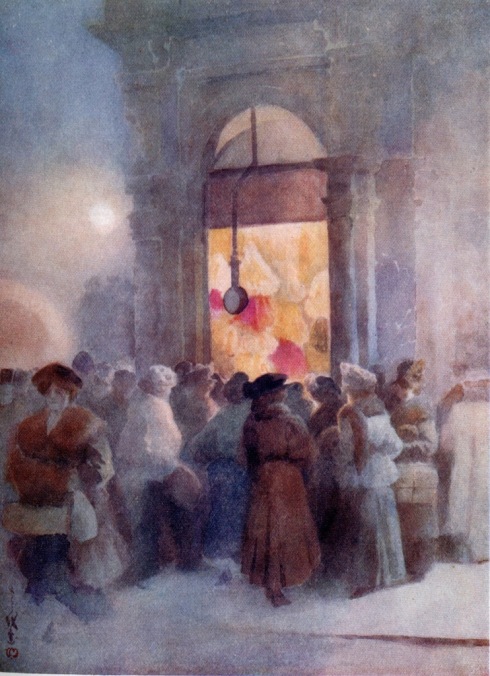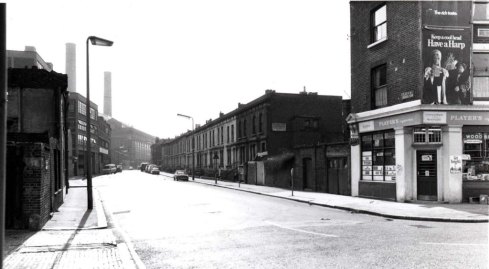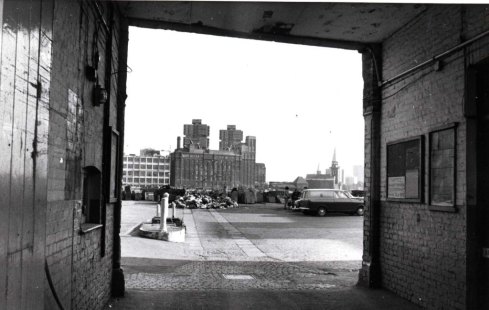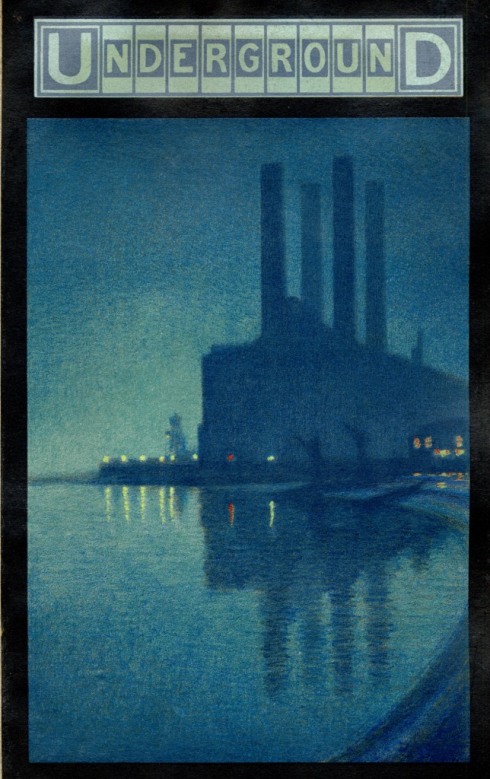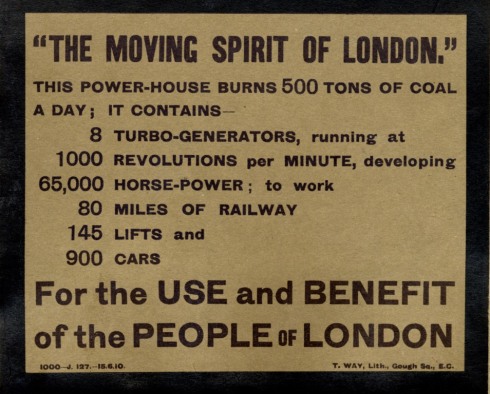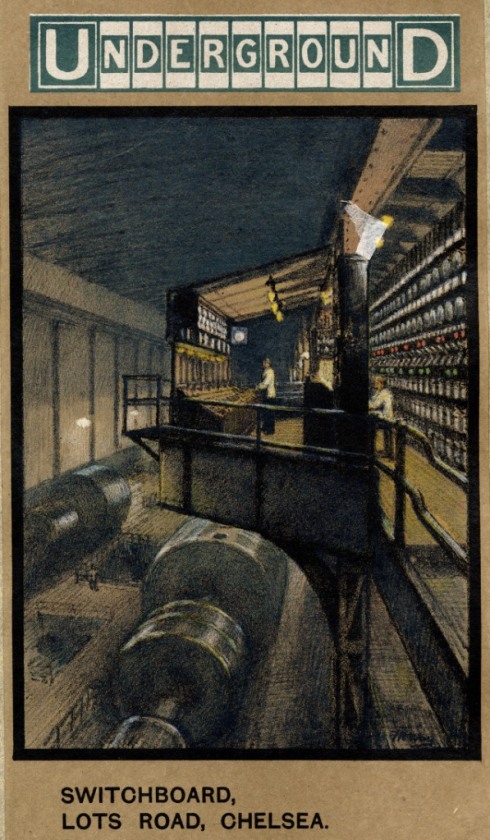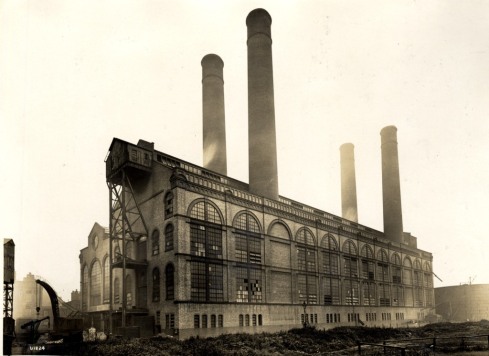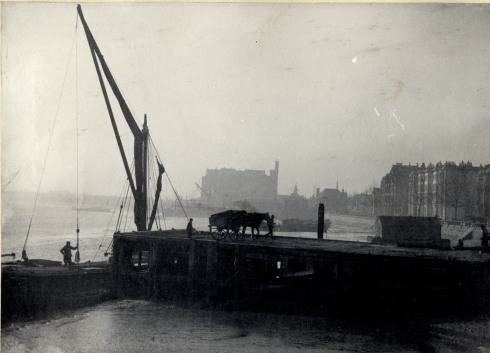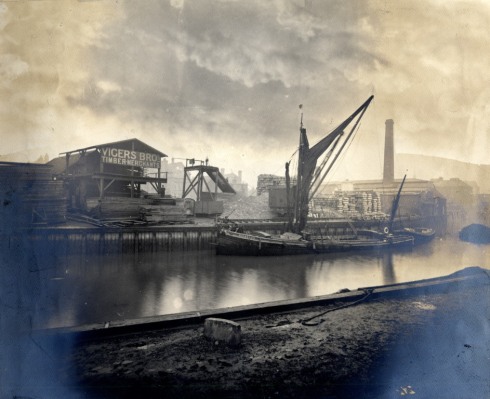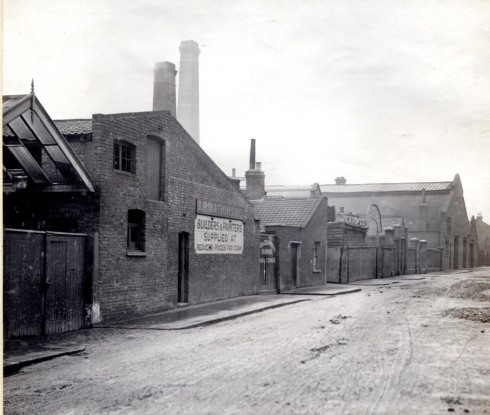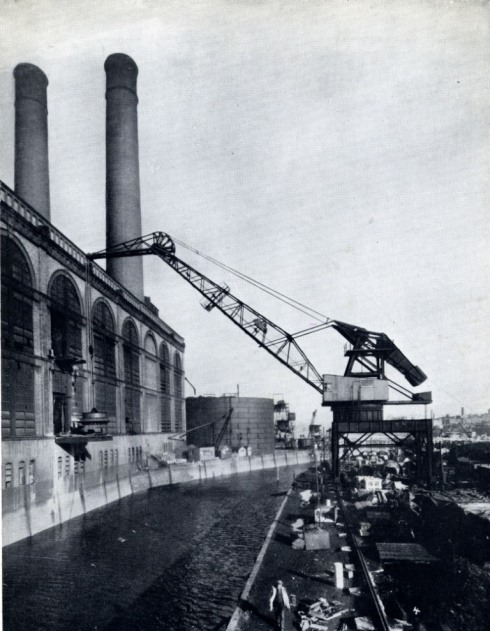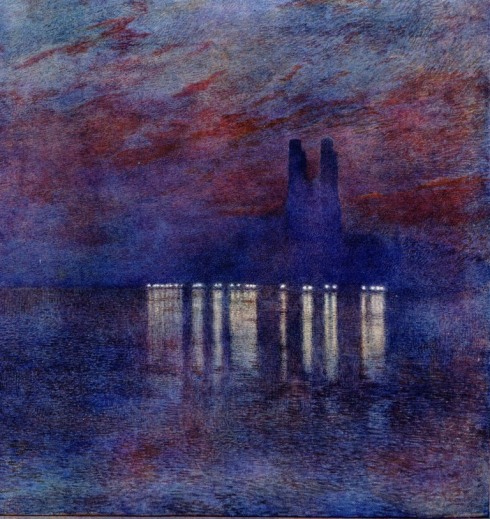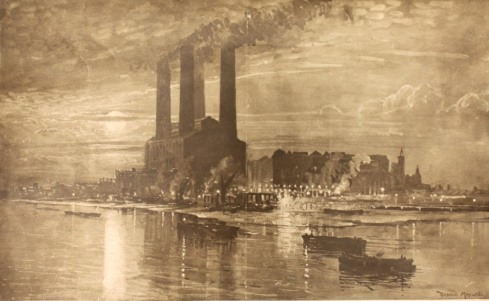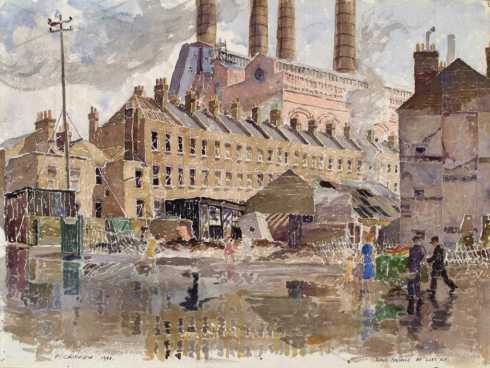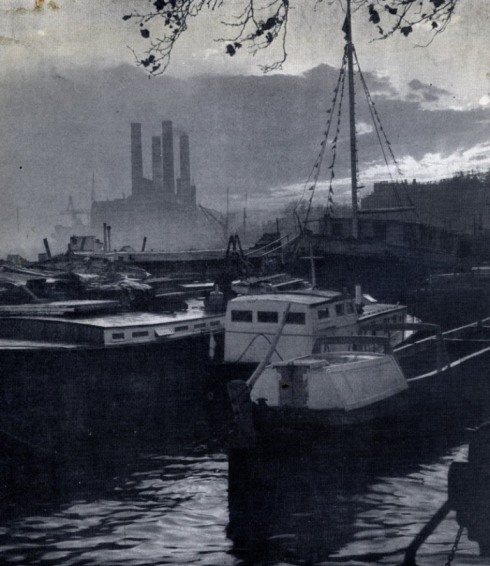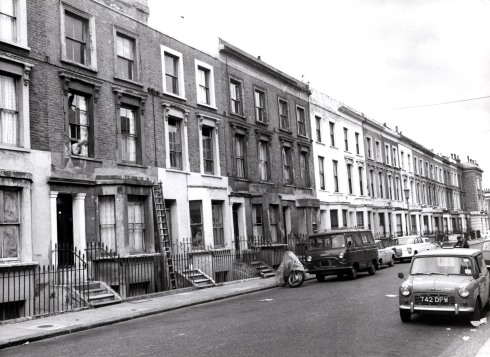Like Bernard Selwyn (see this post among several others), our other chronicler of Chelsea (and other places), JW (Bill) Figg took his camera to work, and the locations he visited gave him access to some unusual perspectives. We’ve already seen his pictures of the interior of Lots Road Power Station. This week we’re following him onto the roof.
In this picture (he’s looking north east I think) across the streets of terraced houses near the Station towards the World’s End Estate. I suspect this is about 1977. Here he zooms in a little.
The estate wasn’t the only thing he could see from his vantage point. Here, he looks down at the river and some of the buildings on the bank.
Note that single car parked right at the end of the jetty. (Why drive all the way to the end?) The short section of ramp puzzled me for a while because I was sure someone had told me exactly what it was in a comment on another post. And they had. Here’s a link to the post and a thank you to Roger Morgan.
Below , the view also takes in both Battersea and Albert Bridges, with Battersea power station in the distance.
Coming down from his vantage point, Figg also took pictures from the other side.
On a far more sunny day, the World’s End Estate from the south, including the houseboats at Chelsea Reach and in the background the Cremorne Estate.
Below, the Wharf buildings, including what must be the two chimney version of the power station, with the furthest chimney hidden by the angle of the shot.
The water looks deceptively calm and pleasant.
This tranquil view across the river as it curves around the bend towards Wandsworth and Putney shows the railway bridge and the completed Chelsea Harbour development.
These pictures date from the 1990s, but Figg had been keeping an eye on the development for a while.
He must be back on the roof of the power station for the next series of images. He dates this one (and presumably the others) 1989.
This section was just a muddy hole with a temporary car park at this stage.
The buildings soon emerged from the mud.
I’m not entirely sure what this one is. I’m sure someone can tell me.
Here you see the overall structure taking shape as the development grows.
The completed Harbour seemed a remarkably optimistic piece of work when it sat there on its own at the end of the increasingly gentrified Lots Road, but since the tide of development has moved along Townmead Road through Imperial Wharf, with new housing and retail development, and a new railway station it looks like the first outpost of a new urban riverside strip heading towards Wandsworth Bridge, with similar developments on the south side of the river.
Figg is still on his perch when he looks north again.
In the distance, Chelsea Football Stadium. Immediately below, I’m tentatively identifying the street as Tettcott Road. Follow its path past the ramshackle adventure playground to the blue building which I think is the Fyna Works, which was pictured at the end of a previous Figg post.
When you read the title, Figg’s World’s End, I imagine you thought it would involve images like this one.
A rare colour view looking up Dartrey Road, one of the lost streets of the World’s End at the King’s Road. Or this view of St John’s Church.
We have seen picture like that before, but this one is a bit of an scoop.
This shows the power station looking across the cleared streets where the World’s End Estate was built. A unique image in our collection.
Finally, one for World’s End enthusiasts like friend of the blog Mr Chris Pain.
I’m pretty sure this is a view of a surviving World’s End building from the opposite direction to the preceding picture. Can anyone identify it and say exactly where it was? A friend of mine came into Local Studies this afternoon as I was finishing up and suggested it might be an antiques shop on the King’s Road but some close work on Google Street View makes me doubtful. Any suggestions?
Postscript
Thanks to all the people who left comments on last weeks post, especially the identification of the cars, and about of the eastern end of Kensal Road. You all add immeasurably to the character of the blog, and its usefulness as a source of information. We’re enjoying a bit of a surge in page views at the moment (post-Christmas energy?) so welcome to anyone who’s just started reading. There are plenty of links this week to take you back to older parts of the blog.
Another postscript
I haven’t done any death notices for a while but I must note the passing of Peter Wyngarde announced this morning. My first reaction was surprise that he hadn’t died years ago, which is a bit mean but it is a common phenomenon. I was a fan of all those ATV shows in my teens, not just Department S but also the Champions, Randall and Hopkirk, the Baron etc. I can also admit to turning back my shirt cuffs over the cuffs of my jacket (yellow shirt, black jacket – it was the 70s) on at least one occasion and having a younger boy from next door shout “Jason King” at me. TV aficionados will also remember Wyngarde in that Hellfire Club episode of the Avengers (despite the memory of what Diana Rigg wore in that episode). I actually met Wyngarde on a couple of occasions when he came into the library, usually to borrow the text of a play. He died at the Chelsea-Westminster Hospital so perhaps he remained a local boy. Thank you, Peter.












































































